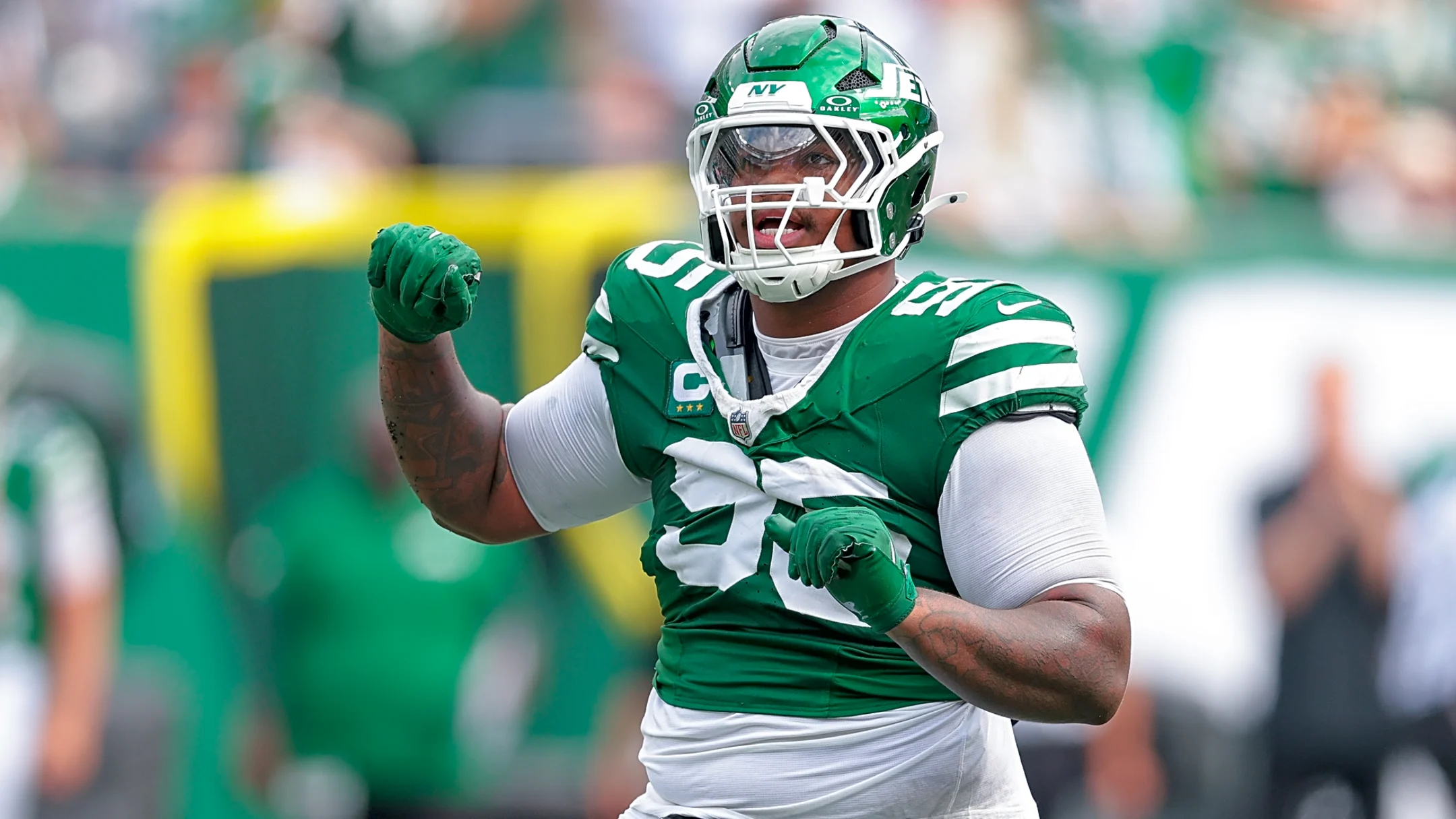By Jets X-Factor,Michael Nania
Copyright yardbarker

The trio combined for a pressure rate of 14.1%. That ranked 17th-best among 32 top-three pass-rush trios (designating each team’s top three pass rushers based on total pressures) in Week 1.
While placing 17th out of 32 does not sound particularly special on the surface, it becomes more impressive when considering who the Jets were going up against.
Rodgers got the ball out quicker than any other quarterback in Week 1, averaging a league-low 2.29 seconds to throw. The fact that Williams, McDonald, and Johnson ranked in the middle of the pack in pressure rate against the league’s fastest-releasing quarterback is a testament to their impact.
These three players have the potential to form one of the better pass-rush trios in the NFL. The problem is that New York has almost nothing behind them.
Outside of Williams, McDonald, and Johnson, the Jets’ defense combined for one pressure, which was a sack by linebacker Quincy Williams.
Yes, your math is correct: The Jets did not get a single pressure from the rest of their defensive line.
The following defensive linemen combined for no pressures on 57 pass-rush opportunities.
Micheal Clemons: 0 pressures on 20 pass-rush snaps
Harrison Phillips: 0 pressures on 18 pass-rush snaps
Jay Tufele: 0 pressures on 9 pass-rush snaps
Jowon Briggs: 0 pressures on 7 pass-rush snaps
Tyler Baron: 0 pressures on 3 pass-rush snaps
Phillips’ silence can be somewhat excused, as he has never been known as a pass rusher. His job is to excel in the run game, and he did just that in his Jets debut, recording a pair of run stuffs while helping to free up room for Quinnen Williams to dominate.
While the Jets are hoping players like Clemons and Briggs can provide some impact in the run game, it is problematic for a defense to deal with such poor pass-rush depth. It causes the pass rush to become a non-factor as soon as the Jets pull one of their three stars off the field.
Consider: All four of the Jets’ sacks came with McDonald on the field, despite the fact that he was only out there for 61% of Pittsburgh’s dropbacks. New York had four sacks on 22 dropbacks with McDonald on the field compared to no sacks on 14 dropbacks with McDonald on the sidelines.
Ideally, a defense should have multiple reserves who can be at least somewhat threatening to the pass protection. While every defense will see a drop-off when it takes its stars off the field, it should never be this drastic. New York can go from a pairing as dangerous as Williams and McDonald to a Phillips-Clemons duo capable of going an entire game without pressuring the quarterback on nearly 40 tries.
Potential solutions
Roster additions are unlikely at this point, so it is up to the Jets’ coaching staff to find creative ways to work around this issue.
The Jets have a handful of appealing options. They will not teach any of these players to rush the passer like Von Miller overnight, but there are available methods to optimize the pieces at their disposal.
Here are three of the most realistic paths to improvement.
1. Play Will McDonald more snaps
Will McDonald only played 55% of the Jets’ defensive snaps (31 of 56). He was on the field for just one more snap than Micheal Clemons (30 of 56).
Presumably, this is because the Jets are still low on McDonald’s run defense, whereas they believe Clemons can give them better production in that phase. However, the Jets were unable to achieve a platoon that reflects these differences. McDonald and Clemons played the same number of pass-rush snaps (20).
That has to change.
Even if the Jets are pessimistic about McDonald’s run defense, Clemons is hardly an upgrade. In fact, Pro Football Focus rated McDonald (46.2) and Clemons (44.5) with similarly poor run defense grades against Pittsburgh.
Because Clemons is barely an upgrade in the run game (if at all), there is little reason to justify playing him almost the same number of snaps as McDonald. The Jets can save him for some goal-line and short-yardage situations where they want size on the field, but in any other situation, McDonald is a vastly better option.
The fallacy of trying to platoon defensive linemen based on run-pass skill sets is that a pass is nearly always at least equally likely as a run in the modern NFL. There are obvious pass situations, allowing you to pigeonhole a player solely for pass-rushing situations (a la 2022 Bryce Huff), but there is no such thing as an obvious rushing situation besides the rare third/fourth down with inches to go.
If you try to platoon a player for his run defense, he will still end up playing a high percentage of his snaps against the pass, which the Jets saw with Clemons on Sunday. That makes him a liability on over half of his snaps.
Contrary to the Jets’ previous coaching staff, there is reason to believe that Aaron Glenn’s staff is willing to hike the snap count of a starting defensive lineman. In the opener, New York’s revamped coaching staff displayed tremendous faith in Jermaine Johnson and Quinnen Williams to handle heavy workloads, which is something New York did not do under Robert Saleh’s rotation-based scheme.
Johnson played a career-high 89% of the snaps, proving there will be no “ramp up” whatsoever after his Achilles injury. Williams played 77% of the snaps, which would be a significant increase over his career-high of 69% over the course of a season.
Given their faith in Johnson and Williams, it is time for New York to show the same confidence in McDonald. If that means he makes a few more mistakes in the run game, so be it. It’s a worthwhile trade-off for the benefit of converting Clemons’ useless pass-rush snaps into more playmaking opportunities for the team’s best sack artist.



